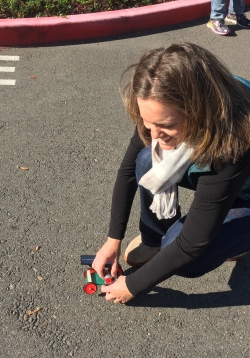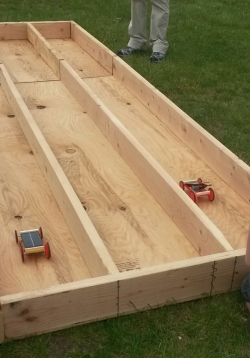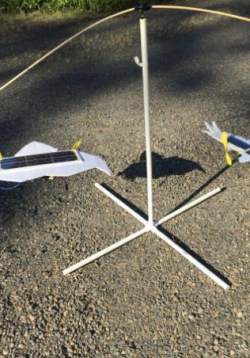Solar Car Engineering Challenge Unit
Students will build a solar car using instructions provided (Sol Run). They will take measurements of their car and then test to see how fast it can travel a 3m track. After students obtain their initial results they will research how to improve the car’s...
Gears vs. Pulleys on Solar Cars
Students will design an investigation to test differences between solar vehicles. This is an excellent follow-up lesson to the solar boat activity or any other activity in which students have already experimented with other types of solar vehicles. However...
Solar Cars Science Investigation
Students will design a science investigation to test solar car with a pulley or with a variety of gear sizes. In the previous lesson, they were introduced to the different types of systems that can be employed on their car. In this lesson they will use...
Build Solar Cars
Students will build their solar vehicles. There are many options for them to do this, depending on the specific variables hoping to be tested following the construction and material-selection process. Students will be given the opportunity to try out...
Collect Data...Then Compare and Contrast
Students will race different iterations of solar cars: geared and pulley-system cars using varying gear ratios. Students will have the opportunity to make predictions, record data, and explain the results centered on the selection of these different...
Analyze Data and Draw Conclusions
Students have performed the investigation and will now analyze their data. They will accomplish this through a journaling activity that requires them to use the data collected from the actual races. The will refer to sentence frames in order to make...
Solar Mobile Design Challenge Unit Plan
This unit involves students learning about transferring solar energy to small motors, exploring the center of gravity and testing light sources (including the sun). The culminating engineering design project gives students the chance to pull...
Introducing the Solar Mobile Design Challenge
This lesson is aimed to engage students and build excitement for their future engineering design challenge of building the fastest Solar Powered Mobile. Through multi-media resources, Students will encounter real life solar aircrafts and a room-sized...
Exploring Circuits and Optimum Power
This lesson is an exploratory learning cycle that will give the instructor input as to where students are in their understanding of circuits and also scaffolds student learning. This lesson starts by engaging students by using an Energy Stick. Then,...
Exploring Center of Gravity
Since the concept Center of Gravity (mass) is a key factor in a mobile, students will participate in some activities to help them experience and understand this principle so it can be applied to their final Solar Mobile design. This lesson starts with a...



